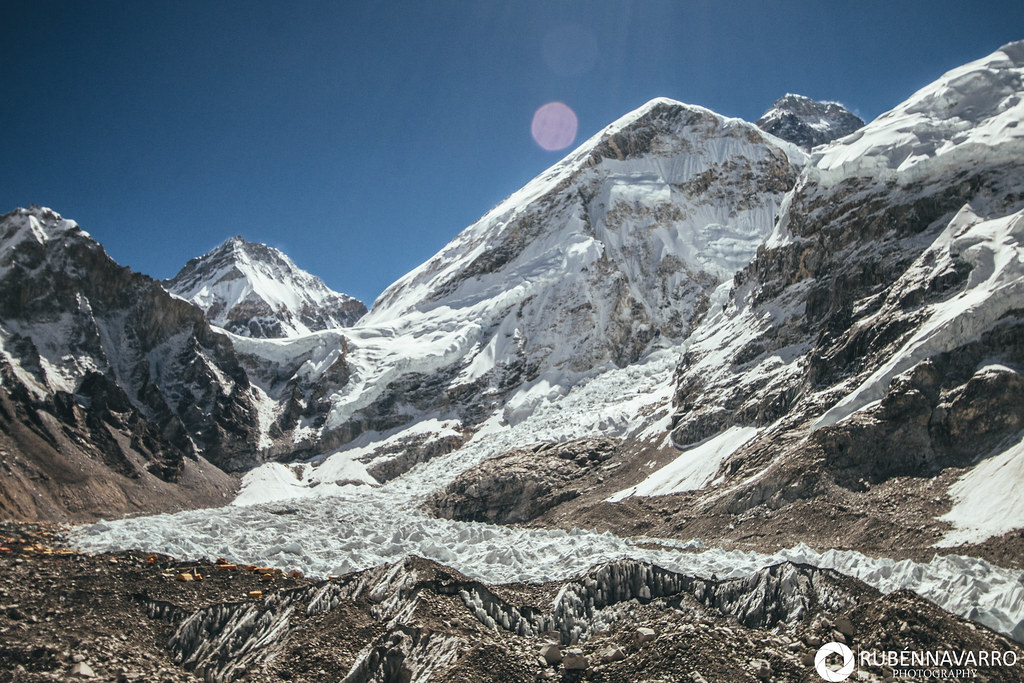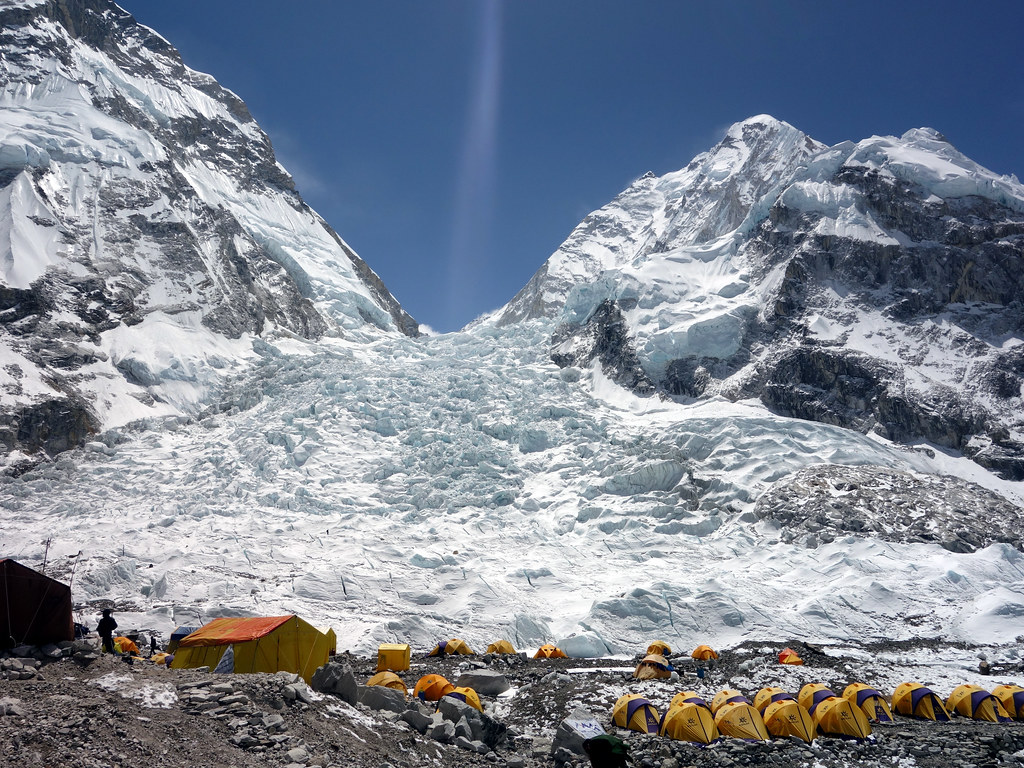Which Is the Best Time of the Year to Do Everest Base Camp Trek in Nepal?
Which is the best time of the year to do the Everest Base Camp Trek in Nepal? The Everest Base Camp Trek is a remarkable adventure that offers trekkers an opportunity to experience the grandeur of Mount Everest, the highest peak in the world. This trek is renowned for its stunning landscapes, cultural richness, and sense of achievement. Choosing the right time to undertake this trek is essential, as it greatly influences the trekking experience, including weather conditions, trail conditions, and overall enjoyment. The optimal times are during the pre-monsoon (spring) and post-monsoon (autumn) seasons. In this detailed guide, we’ll explore these optimal times and the reasons behind the significance of timing.
Overview of the Everest Base Camp Trek
The Everest Base Camp Trek is one of the most iconic trekking routes globally, drawing adventurers from around the world. Situated in the Khumbu region of Nepal, the trek begins in Kathmandu, the vibrant capital city of Nepal. After a thrilling flight to Lukla, trekkers start their journey through the Khumbu region. This region is renowned for its dramatic landscapes, including lush forests, alpine meadows, and rugged mountain terrain, leading up to the Everest Base Camp at 5,364 meters (17,598 feet).

Significance and Experience
Cultural Immersion: The trek offers more than just breathtaking views; it provides a deep dive into the Sherpa culture and traditions. As you pass through traditional Sherpa villages such as Namche Bazaar, Tengboche, and Dingboche, you’ll have the opportunity to experience the local customs, visit ancient monasteries, and observe daily life in these high-altitude communities. The region’s rich cultural heritage is evident in the colorful prayer flags, chortens, and monasteries that dot the landscape.
Scenic Beauty: The trek is famous for its panoramic views of the world’s highest peaks, including Mount Everest, Lhotse, Nuptse, and Ama Dablam. The ever-changing scenery—from dense forests and lush valleys to stark high-altitude deserts—offers a feast for the eyes. The stunning vistas, especially the sunrise and sunset views over Everest and the surrounding peaks, are some of the trek’s highlights.
Personal Achievement: Reaching Everest Base Camp is a significant milestone for trekkers. The sense of accomplishment from reaching this iconic destination is enhanced by the challenging trek through rugged terrain and high altitudes. The views of Everest and its neighboring peaks from Base Camp provide a profound sense of achievement and are a reward for the physical and mental effort exerted during the trek.
Physical Challenge: The trek is demanding due to its high altitude and varying terrain. Trekkers need to be in good physical condition to handle the rigorous daily hikes and the challenges posed by the altitude. However, the trek is designed to be achievable for most people with a reasonable level of fitness and proper preparation. The gradual ascent and acclimatization days built into the itinerary help minimize the risks associated with high-altitude trekking.
Wildlife and Flora: The trek offers opportunities to encounter diverse flora and fauna. You may see blooming rhododendrons in spring, lush pine forests, and possibly glimpse elusive wildlife like the musk deer or colorful pheasants. The changing flora and fauna along the route add to the trek’s natural beauty and diversity.
Why It’s Popular
Legendary Status: The Everest Base Camp Trek is often on many adventurers’ bucket lists. It offers a unique chance to get close to the world’s highest peak and experience the Himalayas’ grandeur without requiring advanced climbing skills. The trek’s reputation and allure attract trekkers from around the globe.
Accessibility: Unlike technical climbing expeditions, the Everest Base Camp Trek is a trekking route, making it accessible to a broader audience. The trek does not require advanced mountaineering skills, making it possible for enthusiastic trekkers to experience the Everest region up close.
Trekking Infrastructure: The well-established infrastructure in the Everest region, including lodges, teahouses, and local guides, ensures a relatively comfortable trekking experience. The availability of support services, including food, accommodation, and medical assistance, enhances the trek’s accessibility and safety.
Importance of Timing
Timing is Crucial for a Successful Trek
Choosing the right time for the Everest Base Camp Trek is crucial due to several factors:
Weather Conditions: Weather is a major factor influencing the trekking experience. The optimal trekking seasons—spring (March to May) and autumn (September to November)—offer the most favorable weather conditions. During these times, trekkers can expect clear skies, moderate temperatures, and stable weather, which are ideal for trekking. The risk of encountering severe weather conditions such as heavy snowfall or rain is significantly reduced during these seasons.
Trail Conditions: Trail conditions are heavily influenced by the season. In spring and autumn, the trails are generally dry and well-maintained, providing a safer and more comfortable trekking experience. During the monsoon season (June to August), heavy rains can lead to muddy trails, landslides, and erosion, making trekking more challenging and potentially dangerous. Winter (December to February) brings extreme cold and heavy snow, which can obstruct trails and make them more difficult to navigate.
Altitude Acclimatization: Proper acclimatization is essential for a successful trek to Everest Base Camp. Spring and autumn provide relatively stable conditions that facilitate better acclimatization. The gradual ascent during these seasons allows trekkers to adjust to the altitude more effectively, reducing the risk of altitude sickness. In contrast, extreme cold in winter or high humidity during the monsoon can complicate the acclimatization process.
Crowd Management: Trekking during peak seasons means encountering more fellow trekkers, which can lead to crowded trails and lodges. For those who prefer a quieter experience with fewer people, trekking just outside the peak seasons might be preferable. However, this comes with its own set of challenges, such as less predictable weather and fewer available services.
Local Festivals: Autumn is a festive period in Nepal, with major festivals such as Dashain and Tihar taking place. These festivals offer a unique cultural experience, allowing trekkers to witness vibrant celebrations and engage with local traditions. Participating in or observing these festivals can add an extra layer of cultural richness to the trekk
Optimal Seasons for Trekking: Spring and Autumn
Spring (March to May)
Advantages of Trekking in Spring:
- Mild Weather: Spring is characterized by mild temperatures that make trekking comfortable. During the day, temperatures at Everest Base Camp range from 10°C to 15°C (50°F to 59°F), providing pleasant conditions for hiking. While nights can be cooler, they are generally manageable with proper gear. The milder weather conditions contribute to a more enjoyable trekking experience.
- Clear Skies: The weather in spring is generally stable, with fewer weather disturbances compared to other seasons. This stability results in clear skies and excellent visibility of the Himalayan peaks. Trekkers can enjoy unobstructed views of Everest, Lhotse, and Nuptse, which enhances the overall experience and provides great opportunities for photography.
- Blooming Rhododendrons: Spring brings vibrant colors to the landscape with blooming rhododendrons and other wildflowers. The lush greenery and colorful blooms create a picturesque setting for trekking, adding to the trek’s visual appeal.
- Fewer Crowds: Compared to autumn, spring typically experiences fewer trekkers. This results in a more serene and less crowded trekking experience. Access to accommodations and permits is generally easier, and trekkers can enjoy a more tranquil atmosphere along the trail.
Autumn (September to November)
Benefits of Autumn:
- Stable Weather Conditions: Autumn is known for stable weather patterns. The monsoon rains have cleared, leaving behind crisp, clear air. Temperatures are comfortable, ranging from 5°C to 15°C (41°F to 59°F) at Everest Base Camp, making it an ideal time for trekking. The dry conditions contribute to better trail conditions and a more enjoyable trekking experience.
- Clear Views of the Himalayas: Autumn’s clear skies offer some of the best panoramic views of the Himalayan range. The crisp and dry air enhances visibility, allowing trekkers to see the majestic peaks in their full glory. This is an excellent time for photography and taking in the breathtaking scenery.
- Festive Atmosphere: Autumn is a festive season in Nepal, with major festivals such as Dashain and Tihar occurring during this time. These festivals provide a unique cultural experience, offering trekkers the opportunity to witness local traditions, participate in celebrations, and engage with the local community. The festive atmosphere adds an extra layer of cultural richness to the trek.
Weather Conditions and Their Impact
Temperature and Weather Patterns
Spring Weather: Spring is marked by a mix of warm temperatures and occasional snowfall. The weather is generally stable, but trekkers should be prepared for some variability. Snowfall at higher altitudes is possible but usually does not heavily impact trail conditions. Daytime temperatures are moderate, while nights can be cooler, requiring layered clothing to stay comfortable. Spring’s weather conditions generally provide a favorable environment for trekking.
Autumn Weather: Autumn is characterized by dry, crisp days with minimal precipitation. Temperatures are generally cooler than in spring but still comfortable for trekking. Night temperatures can drop significantly, so appropriate cold-weather gear is necessary. The lack of rainfall during this period helps keep trails in good condition, reducing the risk of mud and slippery conditions.

Impact on Trekking Experience
Spring: The combination of mild temperatures and occasional snowfall means that trails are usually in good condition, although some muddy sections may appear early in the season. Clear skies offer great visibility, but trekkers should be prepared for sudden weather changes. Spring is an excellent time for trekking if you prefer moderate temperatures and fewer crowds.
Autumn: The dry conditions in autumn ensure that trails are generally free of mud and slippery conditions. The clear weather enhances visibility, making it ideal for trekking. However, temperatures can drop significantly at higher altitudes, so trekkers need to be prepared for cold conditions. Autumn offers a stable and comfortable environment for trekking with the added benefit of cultural experiences.
Peak vs. Off-Peak Seasons
Advantages of Peak Seasons
Higher Likelihood of Favorable Weather: During peak seasons (spring and autumn), the weather is more predictable and generally favorable for trekking. This reduces the likelihood of encountering extreme conditions that can impact the trek, such as heavy snow or rain.
More Services Available: Peak seasons see an increase in the availability of services, including experienced guides, porters, and accommodation. The infrastructure is well-prepared to handle the influx of trekkers, ensuring a smoother experience. Trekkers have access to better quality lodges and more efficient support services.
Better Infrastructure: Trekking routes and facilities are well-maintained during peak seasons. This includes better-quality lodges, more reliable transportation, and efficient support services. The well-established infrastructure contributes to a more comfortable and enjoyable trekking experience.
Challenges of Off-Peak Seasons
Winter (December to February): Winter brings extreme cold, particularly at higher altitudes, which can make trekking challenging. Heavy snow accumulation can obstruct trails and create hazardous conditions. Trekkers must be prepared for severe cold and potential snowstorms. The risk of avalanches and cold-related health issues is higher, making proper gear and preparation crucial.
Monsoon (June to August): The monsoon season brings heavy rains, which can lead to muddy trails, landslides, and increased risk of altitude sickness due to high humidity. The trails can become slippery and treacherous, and the risk of landslides and trail closures is higher. Trekking during this time requires careful planning and flexibility to accommodate potential disruptions.
Crowd Management and Trekking Experience
Managing Crowds
Peak Season Crowds: Trekking during peak seasons can result in crowded trails and lodges. This can affect the tranquility of the trek and lead to longer wait times for accommodation and services. The increased number of trekkers can sometimes detract from the serene experience of the trek.
Off-Peak Seasons: Trekking during off-peak times generally means fewer crowds, providing a more peaceful and intimate experience. This can also result in easier access to lodges and quicker service. However, trekkers must be prepared for less predictable weather and potential challenges related to trail conditions.
Booking and Availability
Peak Seasons: Booking accommodations, guides, and permits in advance is crucial during peak seasons due to higher demand. This ensures that trekkers secure their preferred services and accommodations. Advanced planning is essential to avoid disappointment and to ensure a smooth trekking experience.
Off-Peak Seasons: While there is generally more availability during off-peak times, some services may be limited, and fewer trekkers could mean fewer support options. Planning ahead is still important, but it may offer more flexibility in terms of accommodation and services.
Health and Safety Considerations
Altitude Sickness
Altitude Sickness Risk: Regardless of the season, altitude sickness is a significant concern at high altitudes. Proper acclimatization is essential to minimize the risk of altitude sickness. Spring and autumn provide relatively stable conditions for acclimatization, while extreme cold in winter or high humidity during the monsoon can complicate the process.
Consulting Professionals: Trekkers should consult with healthcare professionals before embarking on the trek to understand their risk factors and prepare adequately. Proper preparation, including acclimatization strategies and understanding the symptoms of altitude sickness, is crucial for a safe trekking experience.
Weather-Related Risks
Winter Risks: The risk of avalanches and severe cold-related health issues is higher in winter. Proper gear, including insulated clothing and sleeping bags, is essential to protect against the cold. Trekkers should also be prepared for potential snowstorms and hazardous trail conditions.
Monsoon Risks: Heavy rains during the monsoon can lead to landslides and trail closures. Trekking during this season requires careful planning and flexibility. Trekkers should be prepared for muddy and slippery trails and have contingency plans in case of trail closures or other weather-related disruptions.
Personal Preferences and Goals
Choosing Based on Personal Preferences
Weather Tolerance: Consider your tolerance for different weather conditions when choosing the best time to trek. Spring and autumn offer milder and more stable weather, while winter and monsoon present more challenging conditions.
Interest in Festivals: If experiencing local festivals and cultural events is important to you, autumn may offer unique opportunities to engage with Nepali traditions. Festivals such as Dashain and Tihar provide a chance to witness and participate in vibrant celebrations.
Availability of Time: Your schedule and availability might also dictate the best time for you to trek. Peak seasons offer the best weather conditions but require advanced planning, while off-peak seasons offer more flexibility but with added challenges. Choose a time that aligns with your personal preferences and availability.
The best times to trek to Everest Base Camp are during the spring (March to May) and autumn (September to November). These seasons offer the most comfortable weather, clear skies, and good trail conditions. Spring features mild temperatures and fewer crowds, while autumn provides stable weather and a chance to experience local festivals. Trekking outside these peak times can be more challenging due to extreme cold or heavy rains. Consider your personal preferences—whether it’s favorable weather, fewer crowds, or cultural experiences—when planning your trek. Proper planning and preparation are key to having a memorable and successful adventure to Everest Base Camp.
Ready to Conquer Everest Base Camp? Experience the adventure of a lifetime with Everest Base Camp Trek. Join us on an unforgettable journey through the heart of the Himalayas, where stunning landscapes, rich cultural experiences, and the awe-inspiring beauty of Mount Everest await. Book your trek today and start your adventure!
